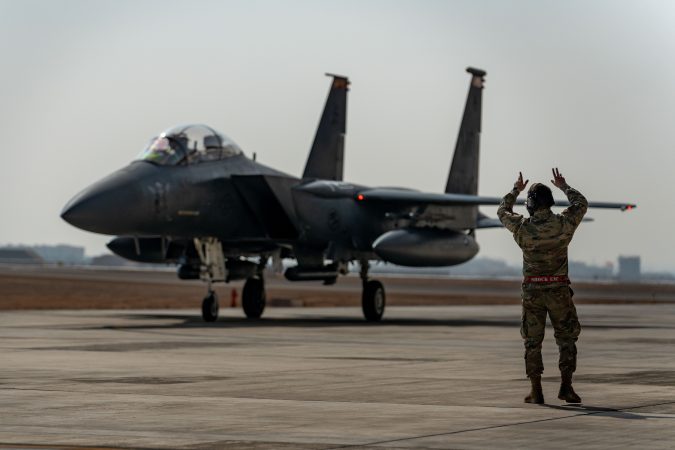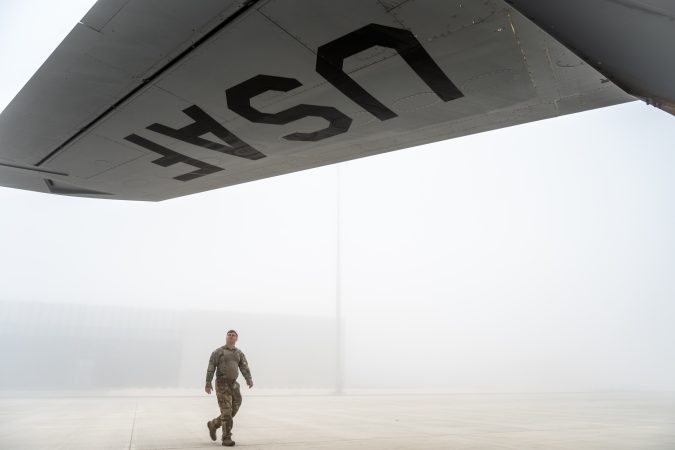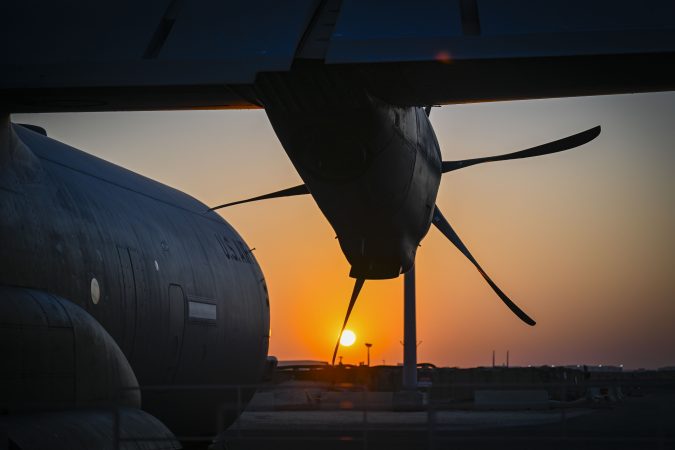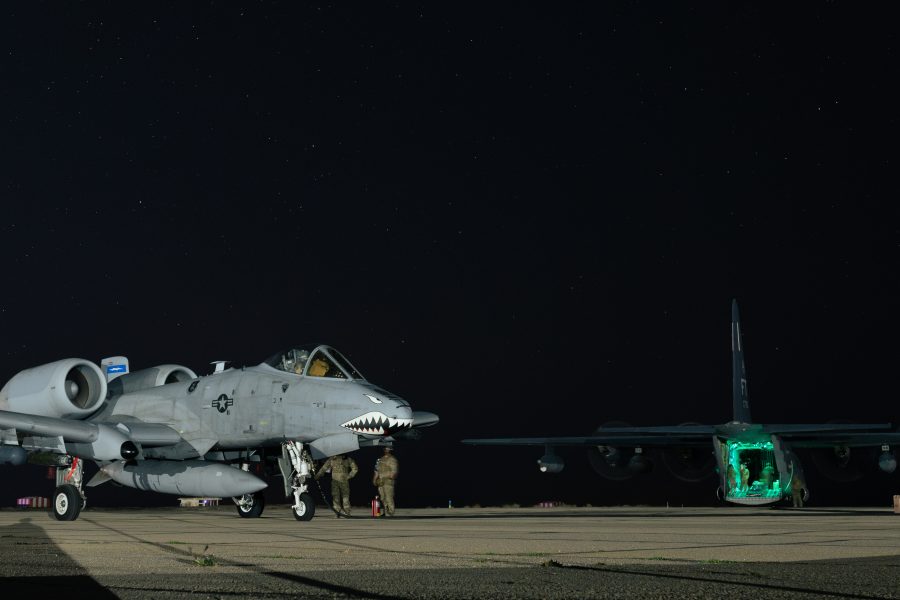The U.S. Air Force is used to operating from large, fixed bases in the Middle East. But recently, Air Forces Central (AFCENT) tested its ability to disperse to smaller, unfamiliar locations with the exercise Agile Spartan, held in recent weeks, which rehearsed the Air Force-wide concept of Agile Combat Employment.
ACE training events, large and small, are going on throughout the Air Force. But unlike other Air Force commands, AFCENT stands out given its proximity to combat. U.S. forces in its region are tasked with stamping out the Islamic State group in Iraq and Syria, assisting at times with the defense of Israel, and helping to protect shipping in the Red Sea and the Gulf of Aden. That means they are often under the persistent threat of drone and missile attacks from Iranian-backed groups and potentially from Iran itself.
“We’re unique in that as we’re doing these ACE events, we are still generating real-world combat power,” Col. Derrick Michaud, AFCENT’s division chief for future operations, also known as the A35, said in an interview with Air & Space Forces Magazine.
But in Agile Spartan, AFCENT still managed to disperse teams from the central hubs that host thousands of troops in the region.
The most recent iteration of the multiweek exercise took place across the Middle East and featured an undisclosed number of Airmen from AFCENT’s deployed Air Expeditionary Wings. In some Air Force training events, Airmen confront simulated threats. For Agile Spartan, they dispersed while also carrying out some actual missions.
“To put it simply, it is all about validating our ability to integrate with regional partners and then generating combat power wherever we need to for a variety of reasons,” Michaud said. “This is going towards the overall knowledge base of the Air Force.”

To carry out the exercise, Air Forces Central used the entire range of CENTCOM’s armed and crewed aircraft. That included A-10 Thunderbolt II attack aircraft, F-16 Fighting Falcons, F-15E Strike Eagle fighters, as well as the specialized HC-130 Combat Talon II cargo aircraft, C-130J Super Hercules airlifters, HH-60W Jolly Green II helicopters, and some of the command’s in-demand KC-135 tankers.
“We did not just create our own missions to make the exercise happen. The missions that we launched out of there were actual real-world combat sorties generated by our team,” said Capt. Ryan Samolewski, an Agile Spartan detachment commander for a KC-135 deployment.

As the exercise unfolded, A-10s deployed away from their base and were refueled in the field in Forward Area Refueling Point (FARP) operations by HC-130 aircraft. F-15Es conducted integrated combat turns, with Airmen refueling and rearming the fighters while their engines were still running, something Airmen did during AFCENT’s defense of Israel in April.
KC-135s also deployed to a new location, which AFCENT declined to disclose, without their traditional support footprint. “This location was the first time ever having a U.S. Air Force asset and personnel operated out of it,” said Samolewski, who serves as the 379th Expeditionary Operations Support Squadron’s director of operations. “We spent a couple of months reviewing requirements and evaluating, as well as working with our host nation partners to figure out all the logistical constraints and elements of getting ourselves out there for this exercise.”
The host nation helped with the requirements for the supply of jet fuel, air traffic control, and fire department support. Learning to operate more effectively with a U.S. partner was another plus.
“ACE is key for us to expand options to complicate the adversaries’ decision-making,” said Michaud. “But this is also about collective self-defense of the region. Our ability to do this and generate combat power supports [partner nations] as well. So it’s a positive thing for both us and our partners.”
Airlifters also supported the temporary deployments in addition to their typical missions.
“Most of what we do around the AOR is sustainment, and for this exercise, it was more a deployment and a redeployment,” said Maj. Joshua McLaughlin, the assistant director of operations for the 39th Expeditionary Airlift Squadron, a C-130 unit. “The big thing for us was operating places with a smaller footprint, so really only taking what we absolutely needed to execute the mission and then going places that don’t have necessarily the full setup like you would in a lot of other more established locations.”
McLaughlin added, “For us, it’s getting the tasking and then providing the needed airlift to make that happen.”
In addition to the wings, Agile Spartan also included “staff-wide event planning and execution” from AFCENT’s U.S. headquarters at Shaw Air Force Base, S.C., to its forward hub at the Combined Air Operations Center at Al Udeid Air Base, Qatar, Michaud said.
AFCENT does not permanently assign units and relies on personnel who rotate in and out the region every six months. But Airmen said they would take their lessons back home. As Agile Spartan is a recurring exercise, information is captured in after-action reports and “coordinated back to the next round of Airmen coming out and future generations,” said Michaud.
“None of these are done in a vacuum,” Michaud added. “It’s an iterative process. We learn something every time we do it. … We had different desired learning outcomes this time that we exercised and we’ll continue to build on it going forward.”

